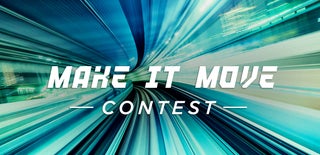Introduction: Marklar 7, New Step in Pnewmohudralic Jet Machines
More than a year ago I have done Marklar 3, the jet vehicle with a hybrid engine. The idea was so simple and effective that it was asked to make more and deeper. ( If you do not go by the link, this is the idea. I use in a pneumatic jet engine carburetor, that makes a mixture of air and water, that has a higher density than air, and lover viscosity than water.)
After analysis of the video, I saw a few problems:
- vehicle was unstable during the move, while acceleration it cal lay in drift and lose speed.
- during acceleration, some water overflow to the back of the vehicle and it lose air, mean energy for moving.
To fix this to problems I decided to spread the air tank and water gallon and make suspension and automatic for direction stability.
I hope this will increase the speed. Answer at the end of the article.
Step 1: Materials, Instruments
Hard to say what I use while building a vehicle. Maybe, will be easier to say, what I not use.
Shortlist of materials:
- Plastic bottle on 2.4 litter.
- hand juicer.
- a lot of wooden coffee mixers (for suspension).
- different plastic pipes.
- valve.
- wooden pieces, which can't hide from me.
- 3 wheels from roller skates.
- Arduino leonardo and accelerometer.
- bicycle nipple (Presta).
- set for a dropper.
and a lot of instruments.
Step 2: Engine
I don't have a 3d printer. Maybe, someday I will create some on 3d printer, but, before I create in 3d model theory of this model have to have approval. So I decided to make the main engines chamber melted together two bottlenecks.
It's an easy and simple method creating chambers with small volumes.
I connected all like shown on the scheme.
Step 3: Suspension and Frame
The frame I build with some wood and wooden coffee mixers. The idea is very simple, use these sticks like springs.
Step 4: Arduino and Me
I ordered Arduino, mpu 6050 and servo, search in internets how to use it.
Firs problem was "How it all starts, I don't have any button or something". But, I find out that it starts after it gets power.
I found the article, which tells how mpu 6050 works, and write my own program.
Attachments
Step 5: Rudder Cables
For rudder cables I use strings.
The same serv managed thrust direction and wheel.
Step 6: Testing One
While the first testing vehicle shows low speed (11 km/h). But self-direction correction works.
After a short analysis of construction, I find out the reason why speed so slow was the ру t-like splitter. Because of it, I lose a lot of speed of air.
Step 7: Bug Work and 7 Atmospheres Explosion
I decided to take away the t-like splitter. And during the first test bottle increase longitude for more than an inch. At that moment I don't pay any attention to that, but later I understand where it went, too late.
After a few manipulations vehicle was done, and I decided to make a "dry start" at home. It means without water.
During the second pumping, the bottle exploded at 7 atm. For big luck, nobody has an injury, except for the vehicle.
Explosion ruin suspension and place for buttery.
The buttery place I don't fix. I place buttery with a tape.
To protect the bottle I use the duct tape. And It works.
So, I protect the bottle, mace off a lot of "bottlenecks".
Step 8: Testing Two and Сonclusion
Main testing. Unfortunately, speed increases only to 15,5 km/h (the highest result). Almost twice slower than the previous vehicle.
And I think I guess why.
I try to increase jet impulse by increasing the mass of working mass by increasing outlet (was 2 mm to 4 mm). And to my realization it wrong way. To understand how to do it write I have to learn a theory about the viscosity of gases and mixtures. And find the golden middle between the density of working mass and outlet.

Second Prize in the
Make it Move












